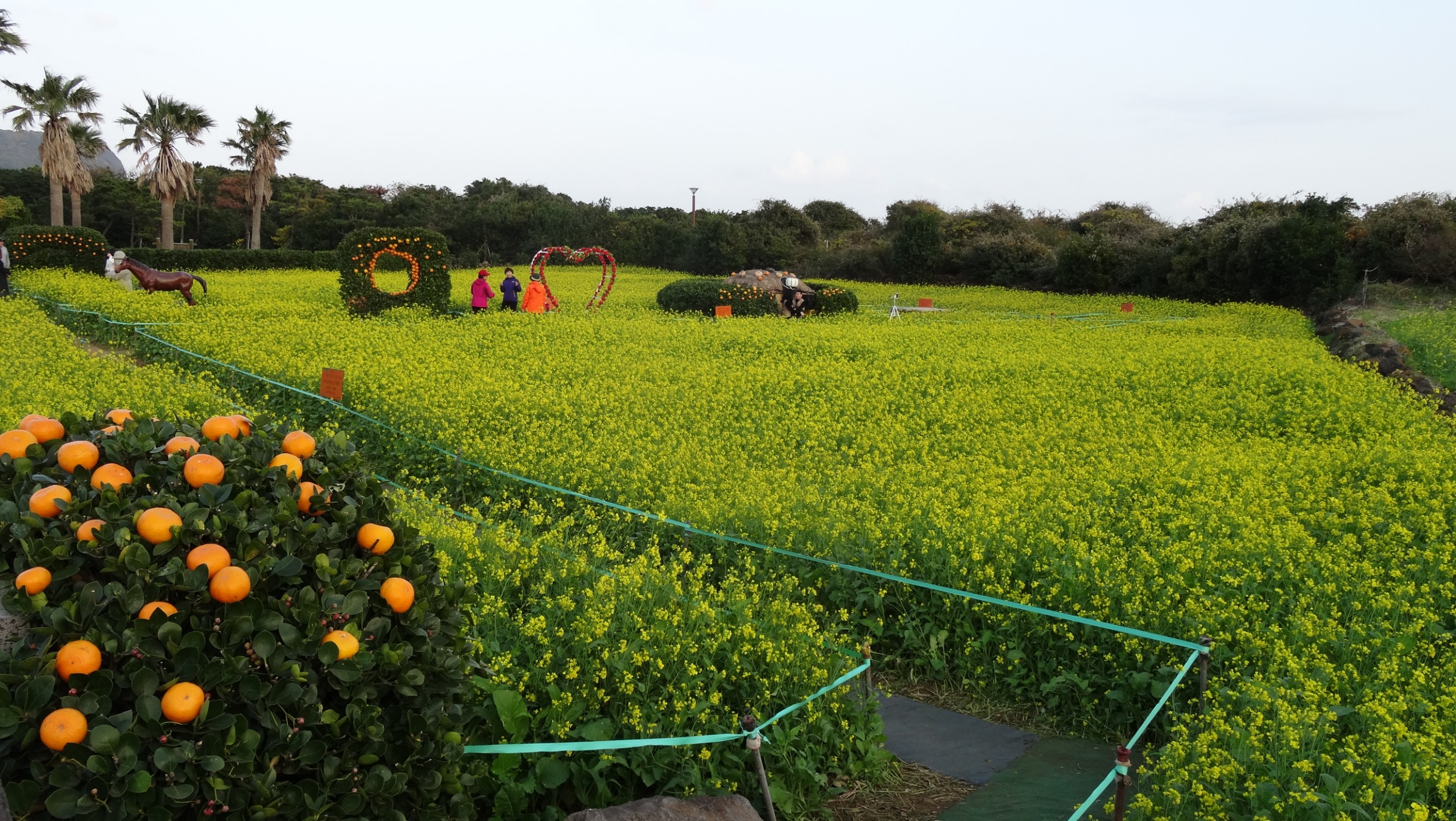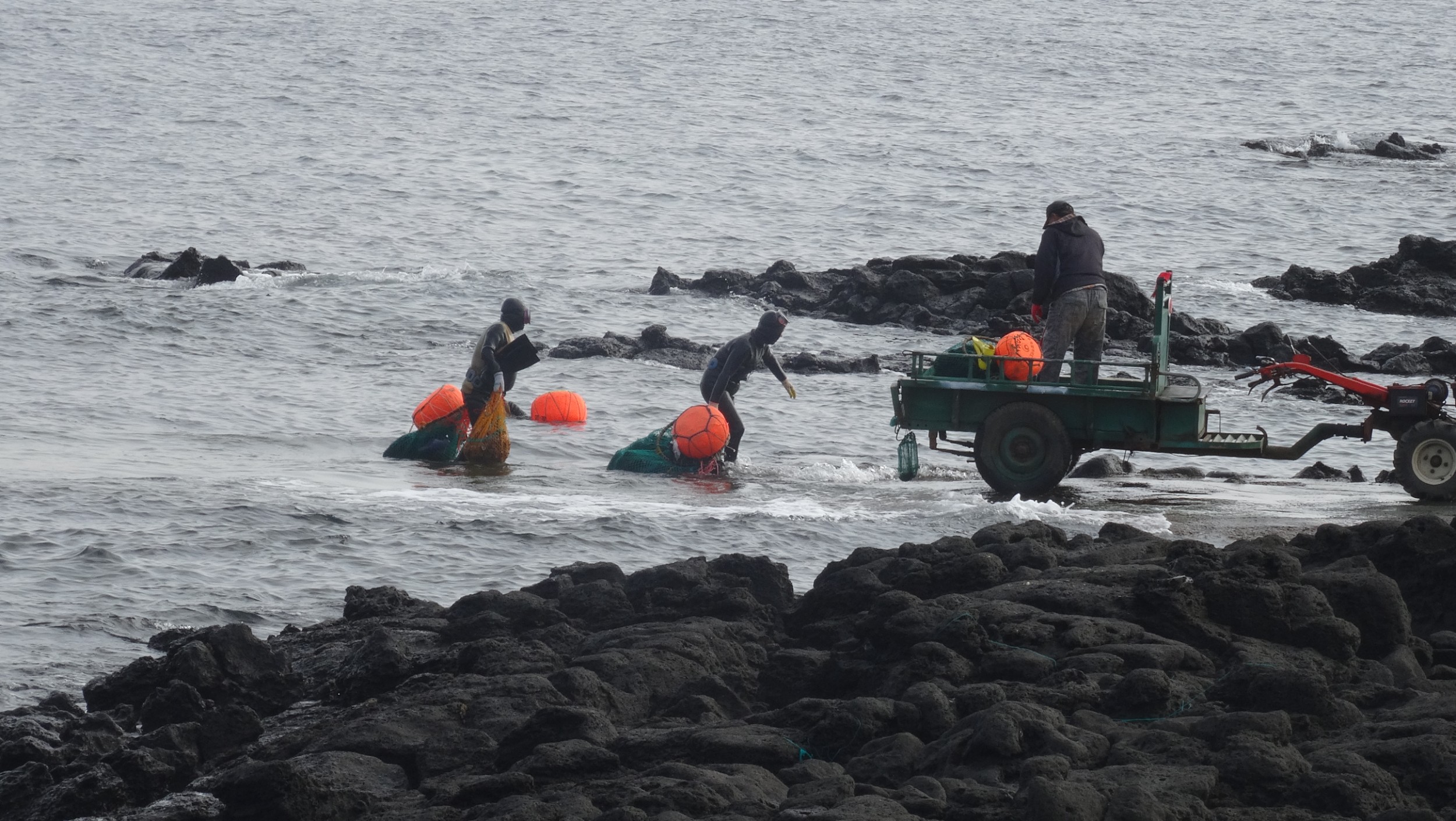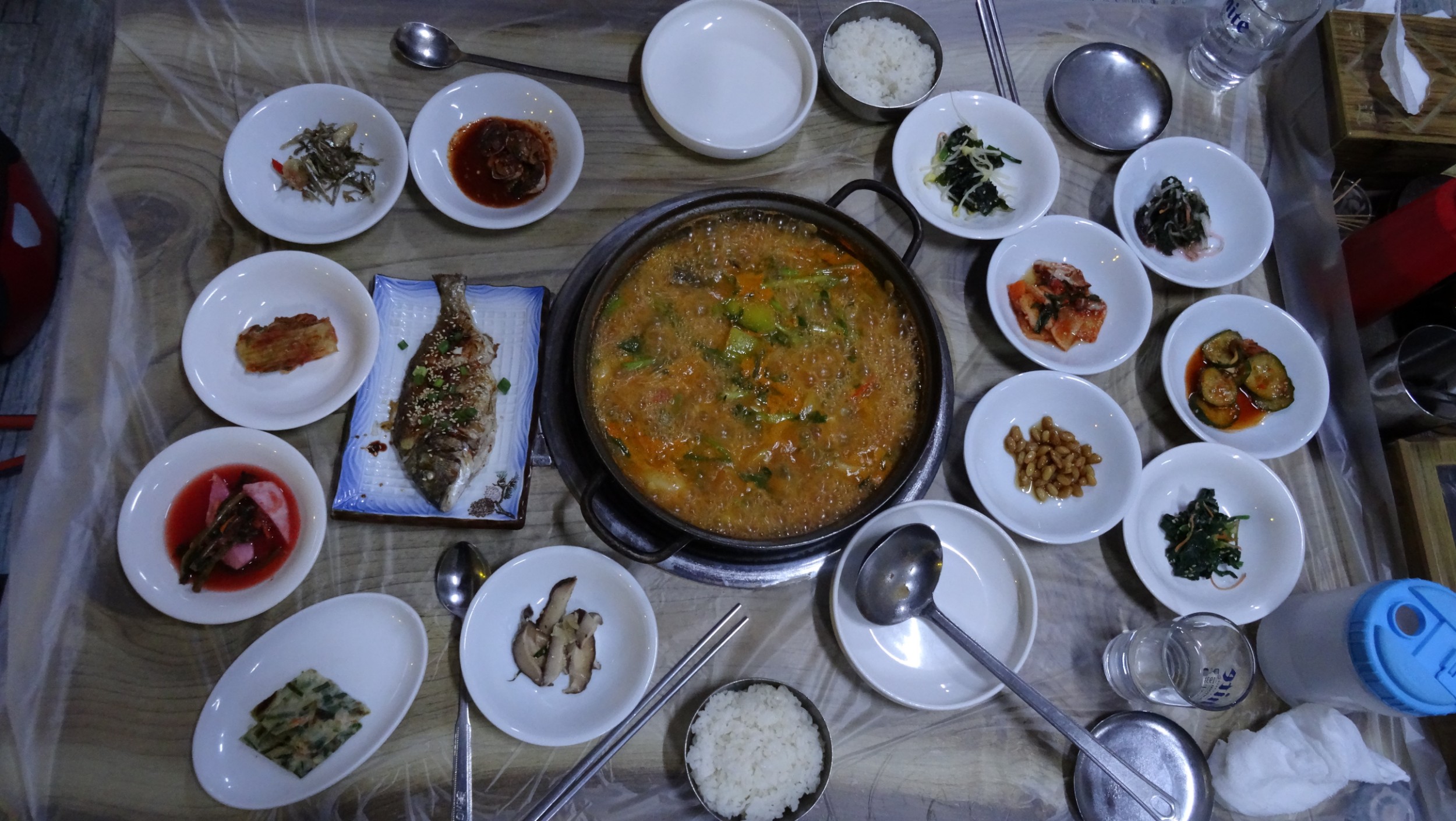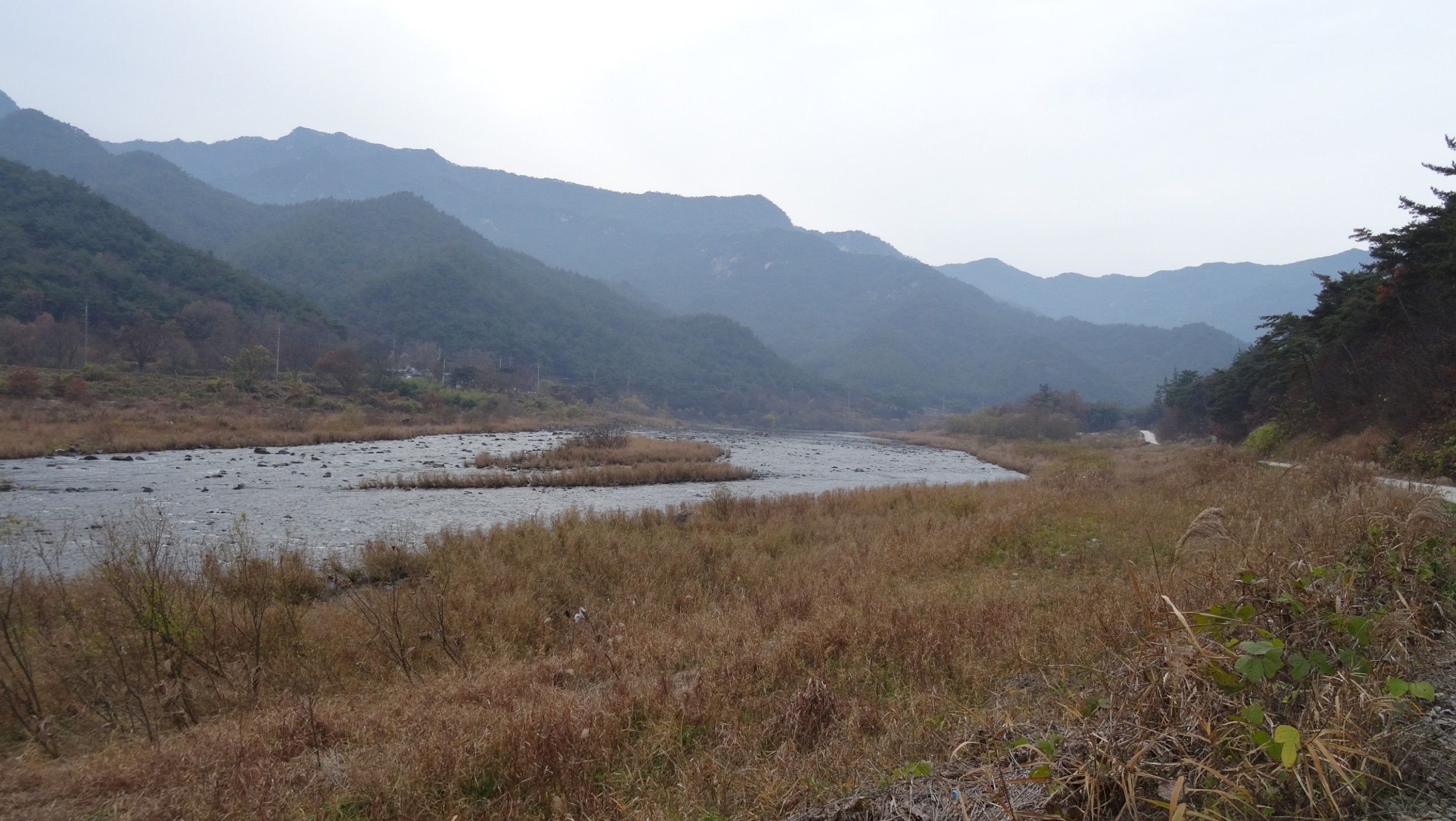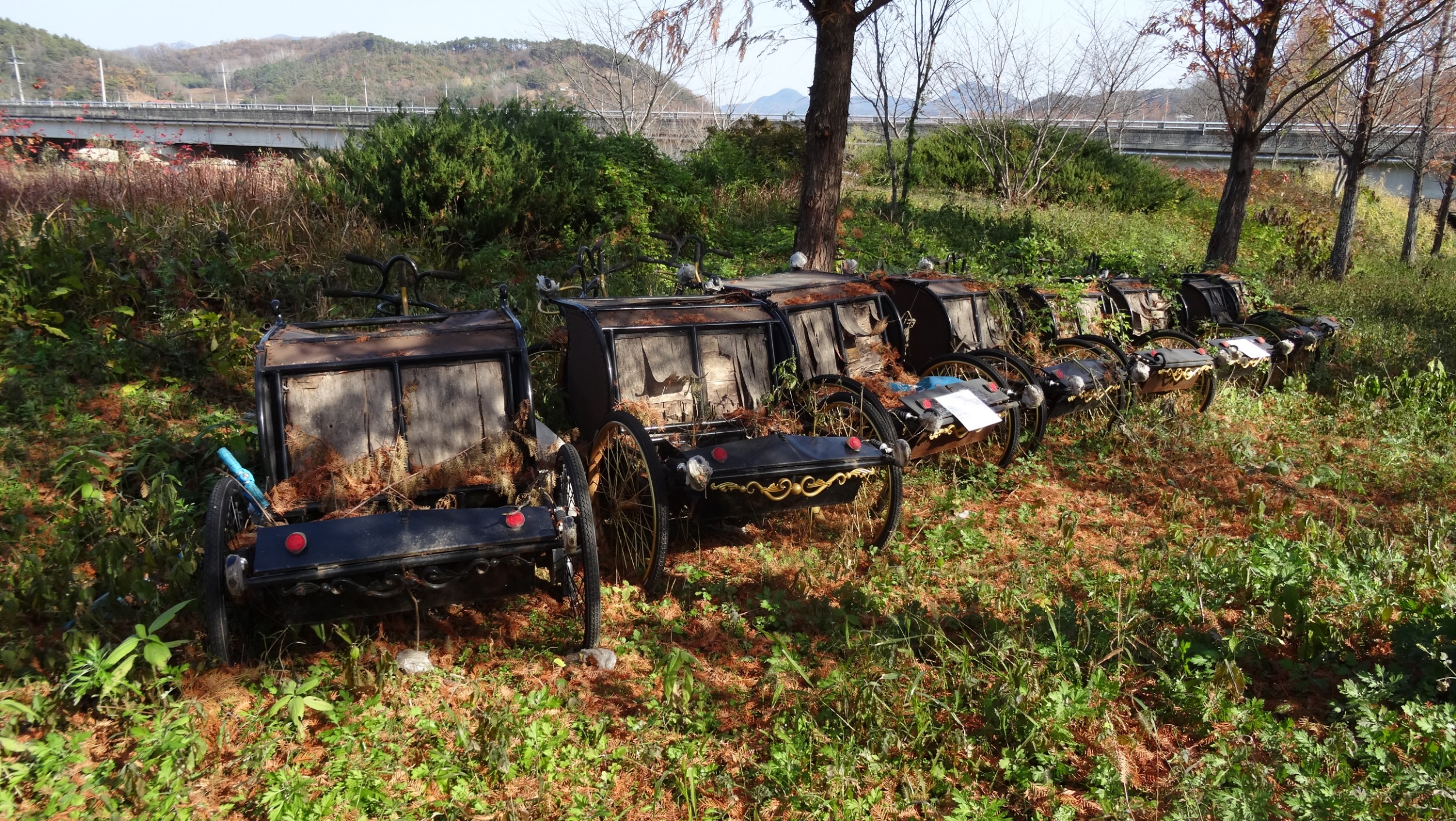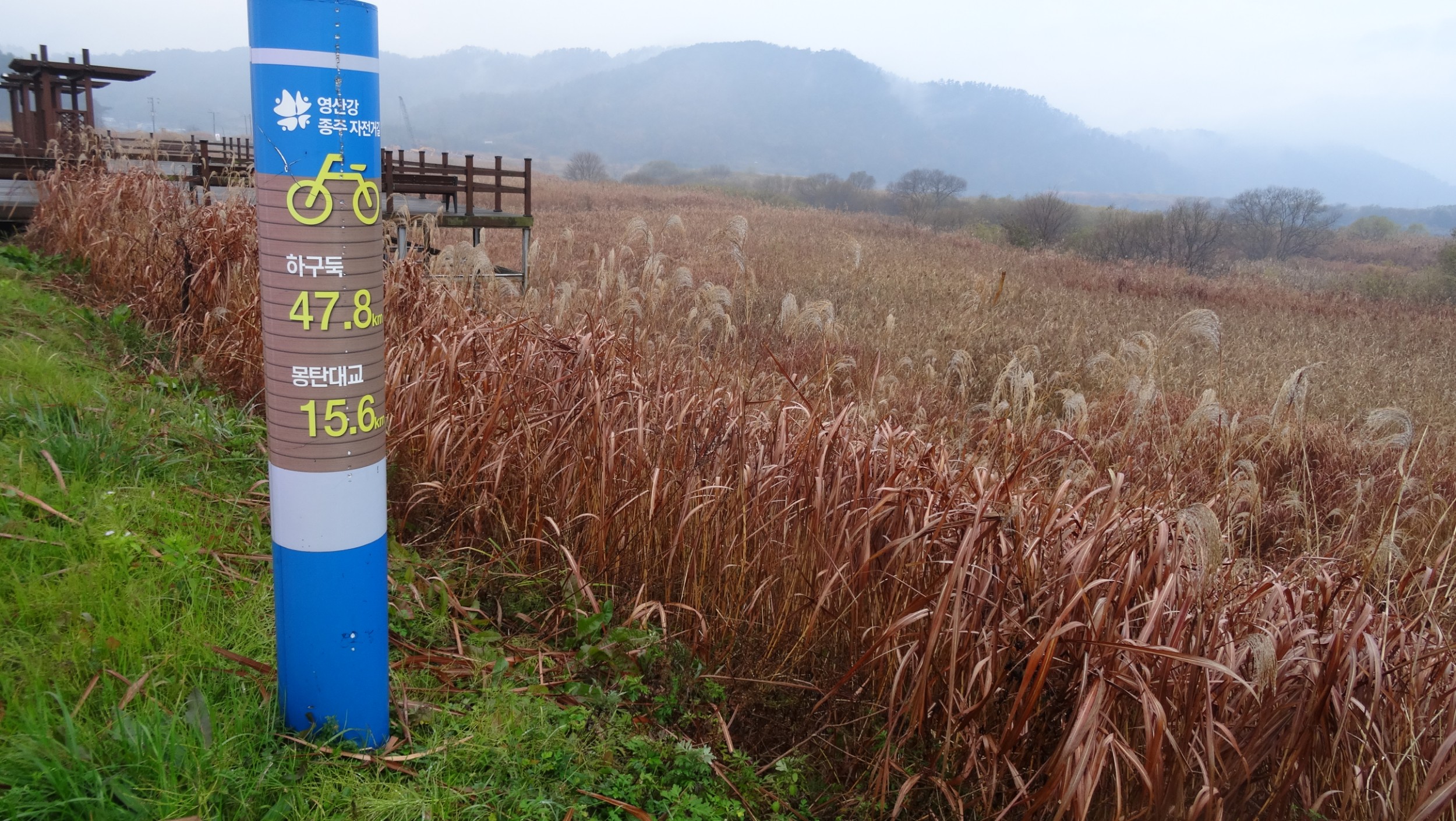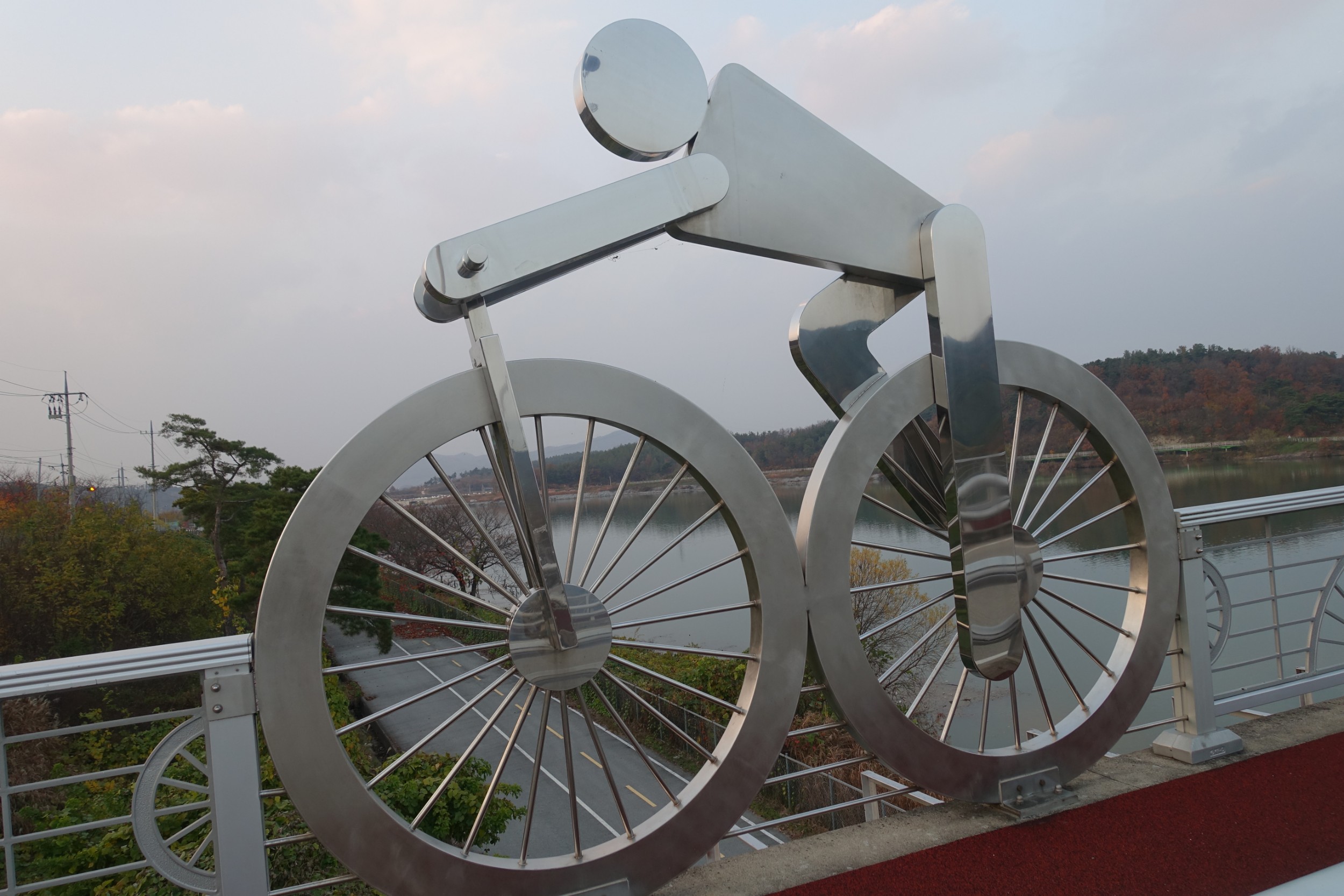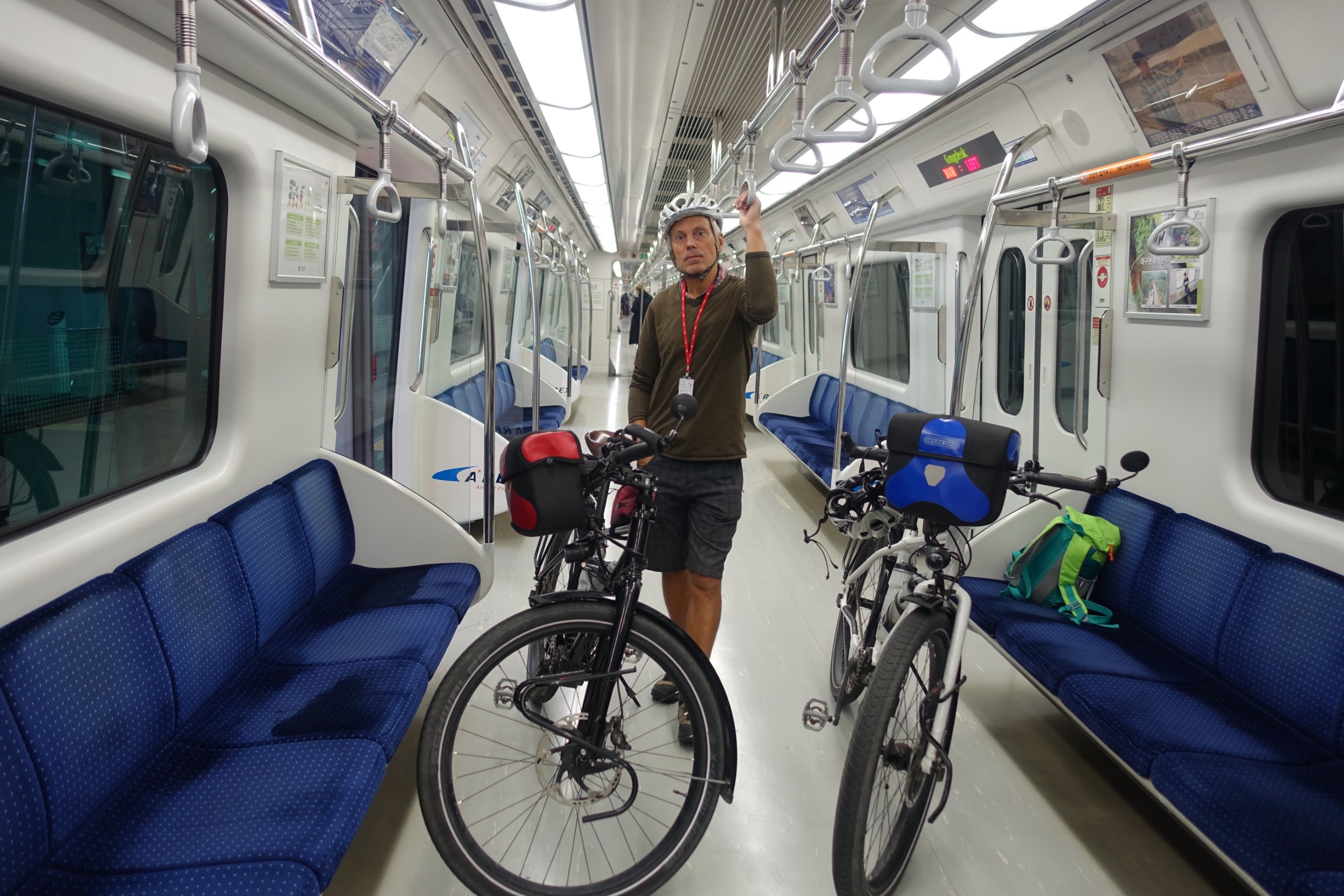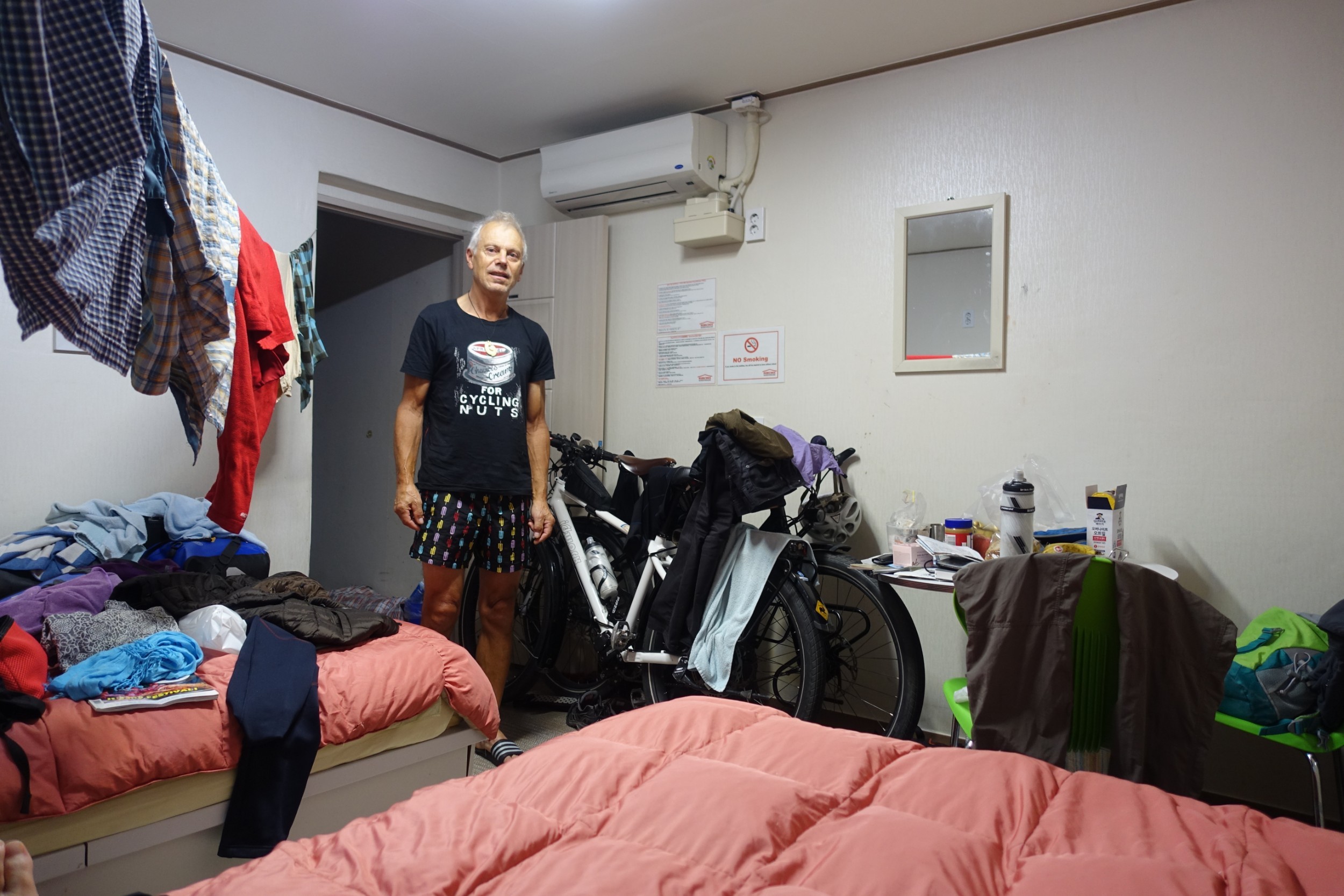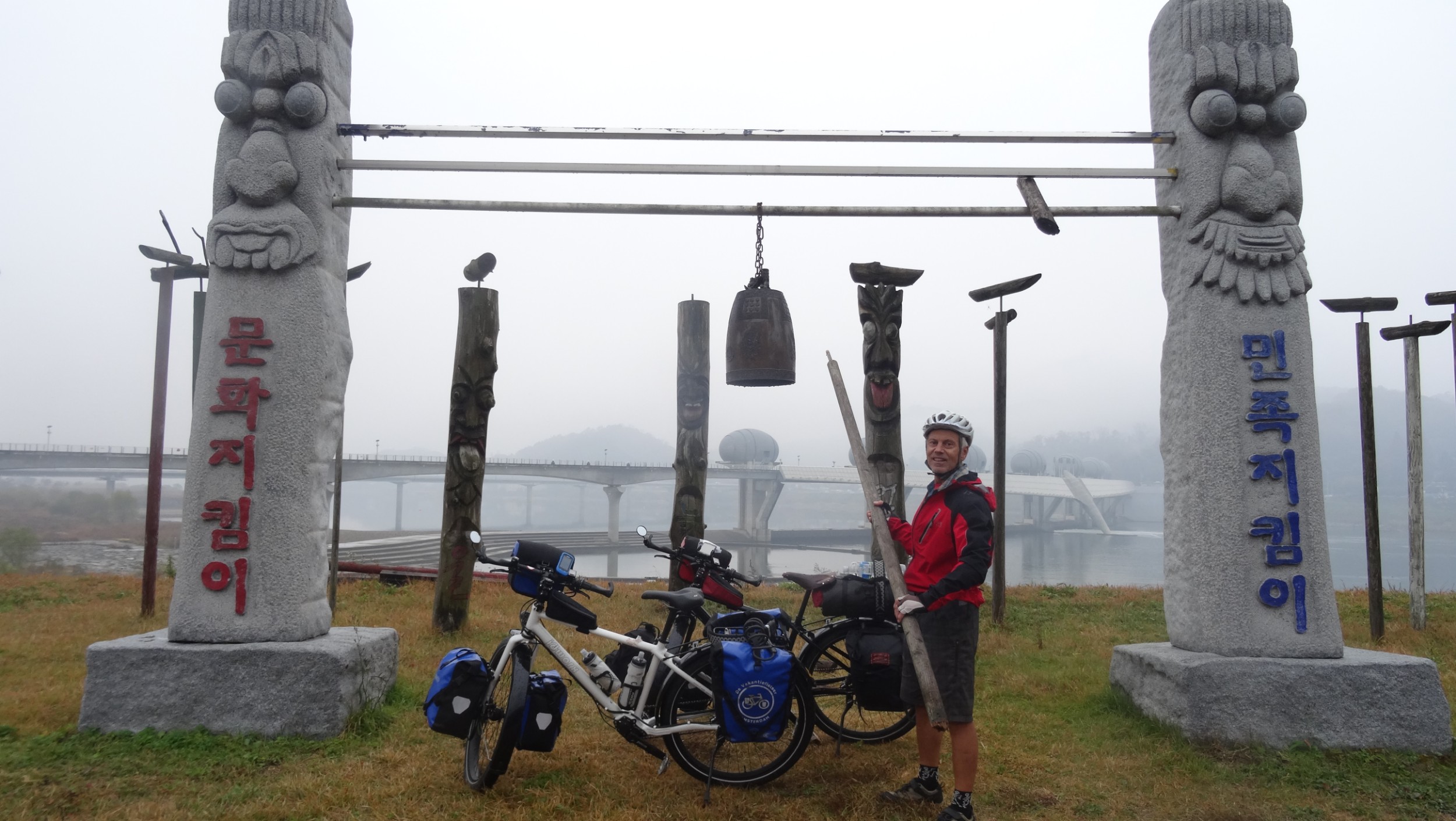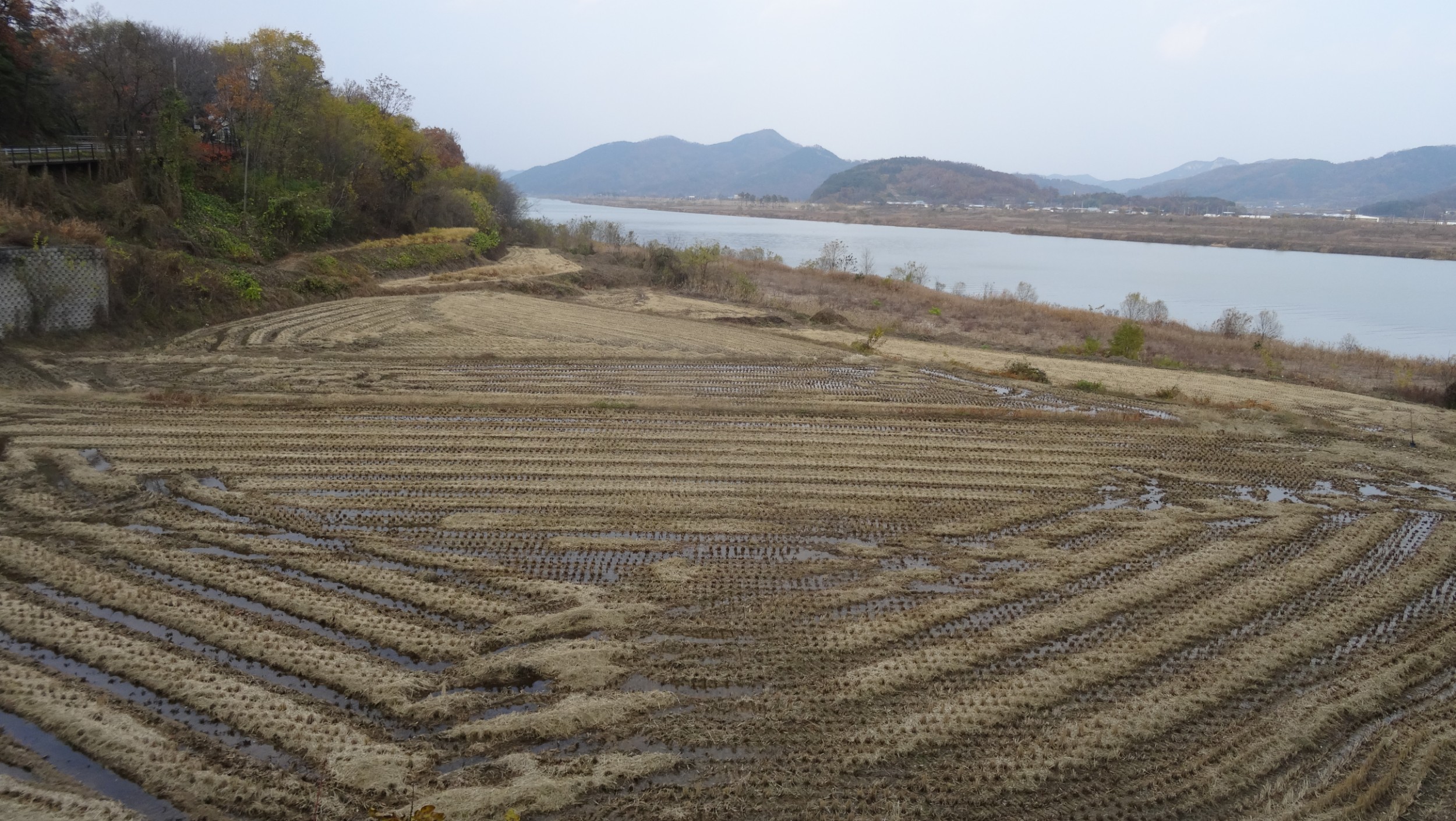Jeju Island: Fantasy Bicycle Trail
Louise George
Certificate Registration Kiosks made good distances to aim for
Jeju Island is a South Korean Autonomous Province off the south coast. It is visited by more than 13 million tourists each year, of which 80% are Chinese and the remainder mostly South Korean locals, although there has recently been an increase in the number of Middle Easterners visiting. The island is promoted as the Hawaii of South Korea, so we were hoping for a warmer climate. In reality, although we have never been to Hawaii, the only resemblance is likely to be that Jeju is also a volcanic island with black basalt rocks dominating the landscape and a stark contrast to white-sand beaches with turquoise ocean waters.
The following is how we rode an anticlockwise circumnavigation of Jeju Island following the Fantasy Bicycle Trail. It is recommended to take this direction because the coast is on the right, the same side as traffic drives.
If rewards are appealing to you then you can get the Korea’s Cross Country Cycling Road Tour Passport (sorry I don’t know where you can purchase this from on Jeju Island) and call in at the Certificate Registration kiosks along the way, for a passport stamp. We did this because we already had the passport from previous rides in South Korea and it gave reasonably spaced distances to cover and points of interest to aim for. If you are interested in reading about our ride from Seoul to Busan, following the 4 Rivers Trail, then click here, or the Seomjingan River and Yeongsangang River Trails, click here.
We travelled in late November, the last week of autumn, and tourism at that time was at a low ebb. Those who were about, were travelling on coach tours. We saw only a couple of other Korean cyclists out riding with a serious attitude, on bikes swifter than ours, and a handful of tourists on hire bikes, that looked like they were having a riding activity for a few hours. Few people sharing the cycle lane was a bonus. At key sightseeing destinations there were many free bus and car parks so clearly at this time there was also less traffic on the roads. If the cycle trail surface became particularly bumpy, or if a section involved much crossing of minor roads or lane-ways, we found it easier to keep a good pace by riding on the road. We got the occasional toot but It seemed more like a gentle ‘I’m a vehicle about to pass’ than a ‘there’s a cycle lane, you should be on it’. I expect that if you ride this course at peak tourist times, you would be expected to remain on the bike path and it would be somewhat slower as you dodge other riders, walkers oblivious to you as they have their faces peering at a screen, poorly parked vehicles, and at times an uneven surface.
Our front panniers were left in Jeju City as we will not be using our camping equipment. Accommodation in the last week of November was very reasonably priced for a couple. We paid between $35 and $45 ($AUS) a night for clean double rooms with an en-suite. We like to store our bikes inside and this was always accommodated, albeit sometimes locked in the corner of a dining room.
Food-wise, Jeju is famous for seafood and pork, from their unique Black Pigs. We’ve been in South Korea almost a month and apart from Bibimbap, Gimbap and Seafood pancake, still struggle with meal choices. I don’t eat pork and the seafood, we thought was quite expensive. Many restaurants had the menu displayed on the walls in hanguel alphabet, so if they didn’t have pictures to point at, or if they had pictures but no price displayed, we looked elsewhere. There were some western foods, with a South Korean fusion, such as hamburgers and bakery food. We found the convenience stores had a range of sandwiches or rice triangles with filling such as tuna, that were good for lunches. Our preference is to be self sufficient for breakfast so we carry breakfast items: muesli, milk, yoghurt and bananas.
We had been told by South Koreans that Jeju Island used to be a beautiful island with a unique culture but it had, over the passed twenty years been spoiled by tourism. We had a Tourist Map that pinpointed more museums, parks, art galleries, theme parks and other man invented attractions than I have ever seen! There are also many geographical features that is where our attention will be directed.
Day 1: Jeju City to Geumdeung-ri 74 kilometres
I recommend you leave from Jeju City early enough to take time at scenic points along the way. The course weaves around the airport with a few little climbs and then follows the coast for a long way before leaving the city outskirts, so riding is at a casual pace. You’ll go by Iho Tewoo Beach, famous for having lighthouses in the form of horses and you’ll see the Gueom Salt Farm from the trail. Hyeopjae Beach is supposed to be one of the most beautiful on the island, but when we visited, the sand was covered in tarpaulin held down by rocks, almost as if the beach had been put to bed for the winter, and it was late afternoon on an overcast day, so the water was as grey as the sky rather than a sparkling blue. We like gardens and spent an enjoyable couple of hours at Hallim Park. Hallim Park has many different sections of gardens each devoted to a theme such as Subtropical Garden, that included interesting reptiles, a bird garden, folk village, Jeju Stone and Bonsai Garden, to name a few. A surprise was being able to walk through two lava tubes; Hyeopjae and Ssangyong Caves.
Day 2: Geumdeung-ri to Seogwipo 52 km
A pretty ride with the sea and black basalt rocky coastline on our right and groups of black curved roofs of seafood farms and other buildings that appeared to be seafood factories on our left. Many busloads of tourists were walking towards Mt Songaksan, where there is a walking trail and luge ride. We watched but didn’t join them. The cycling route headed inland and there was some climbing for the remainder of the day. You might like to stop at the Jungman Maze Park, the Teddy Bear Museum, or the Museum of Sex and Health, but apart from walking in the forecourt garden of the latter, amongst some very interesting statuary, we headed straight for Cheonjeyeon Waterfall.
One section of the Cheonjeyeon Waterfall
The Cheonjeyeon area is a picturesque forest walk, following the waterfall in three parts. By the time we had walked to view the waterfalls we were too late to see Jusangjeollidae Cliffs as they close at 5:20 p.m. We should have stayed the night in this area, close enough to take a look at Jungman Beach and the cliffs the next morning. It would have also made today’s distance more manageable. As it was we rode in darkness to accommodation at Seogwipo and didn’t get the opportunity to return to the sights we had missed.
Jeongbang Waterfall
Day 3 Seogwipo
In the morning we rode to Cheonjiyeon Waterfall, then Oedolgae Rock and across town to Jeongbang Waterfall, that flows into the ocean. After lunch we walked through Lee Jung Seop Culture Street and the Seogwipo Everyday Ollie Market where many vendors were selling seafood, Jeju Mandarins and chocolates of many varieties with centres of jelly made from Jeju citrus juices.
Day 4 Seogwipo to Seongsan Ilchulbong 62 km
Our lunch break was at Pyoseon Beach, a pretty white sand beach. We noticed a campground, the first we had seen, beside the Certificate Registration kiosk. We arrived at the Jeju Folk Village in time to see the 13:30 song and dance performances; the twirling dummer gave a dizzying performance. At the village there were many groups of homes clustered together in themes such as: Mountain Village, Hillside Village, Shamanism Village, and more. While I enjoyed the time off the bike, walking around the village on a pleasant afternoon, for me, having already seen the small cluster of homes at Hallim Park on day one, I felt I’d already had an overview of what homes were like in times past.
The cycle path took us beside a yellow field of canola, where you could purchase a ticket and enter the field to take a photo; one that would be identical to a photo that graced the covers of tourist brochures promoting the merits of visiting Jeju Island. We had seen these ‘photo stops’ throughout South Korea; usually they have a theme frame, often a heart shape. People queue to take a photo through these frames when the scenery is just as beautiful without the ‘set-up’. Dusk accompanied us to Seongsan Ilchulbong and we saw the sun drop below the horizon as we arrived at our accommodation.
The view that enticed us to Jeju Island; this is a photo of a poster displayed on a wall at the bottom of Sunset Peak
Day 5 Seongsan Ilchulbong and Udo Island 11 km
It was a photograph, of the volcanic tuff of Seongsan Ilchulbong (also known as Sunset Peak) in the Qatar Airline Magazine, that prompted us to visit Jeju Island. We were at the foot of the climbing trail at 6:15 a.m. as we understood the ticket office would be open one hour before sunrise. Actually you could only purchase a ticket from 7:30, pointless when sunrise would be at 7:15 a.m. We made our way up anyway. The track was well lit, mostly stair climbing, that took us 20 minutes. At the top there is stepped bench seating, enough to seat thousands of people, facing east. At this time of the year about 100 spaces were occupied. With an overcast sky we weren’t expecting a dramatic sunrise, and when there was just enough pink in the sky for us to see that a new day had dawned, we headed down. Our grey photos, with sun and wind browned grass, bore no resemblance to those in the magazine, taken by a drone from the sea looking towards land, of a crater lush with Spring grass, and the seating edited out.
Nev did the climb but he’d been unwell for a couple of days so we decided to have a second night in Seongsan Ilchulbong for him to recuperate, while I took my bike on the ferry to Udo Island, likened to a Scottish Isle. When purchasing a ticket, you need photo ID, such as passport and you complete a departure card to be allowed to board. The ferry runs often and is only 15 minutes travel time. Without my companion I found myself to be the only Westerner, amongst the other travellers sitting on the floor (there was no actual seating available), where at least I had a warm spot (the floor had underfloor heating) but I couldn’t even eavesdrop as I had no understanding of the languages spoken around me, and gained a new respect for the isolation that may be experienced by solo travellers. The volcanic islet of Udo is visited by 1000s of tourists and to help with traffic management there is a, mostly flat, one way circular route of about 11 kilometres. It seems to be the thing to do is hire a bicycle, tandem, 3-wheeler cart or another vehicle you may have never ridden/driven before and set off for a circuit with stops at key points: caves, white sand beaches (made of the carbonate fossils of red algae) grasslands, restaurants, peanut ice-cream sales. I was away from Nev for 3 hours and had taken the ferry across and return, ridden the circuit and taken my time over a shrimp burger lunch and later watched a group of Haenyeo come into shore from a dive, while I ate a peanut ice-cream. Haenyeo is the name given to women free-divers who for centuries have eked out a living diving for abalone, octopus, sea cucumber and seaweed. The occupation has been immortalised in basalt stone statues throughout the islands of Udo and Jeju. They were given a UNESCO Cultural Heritage of Humanity designation and the South Korean government has given incentives for young women to take up the occupation, but numbers are declining.
Day 6 Seongsan Ilchulbong to Jeju City 70km
The Jeju Cycle Trail finishes at Yongduam Rock in Jeju City and we decided we would complete that 70 kilometre distance in one day, with a detour to Manjanggul Cave. The route to Woljeongri Beach was the same as we had been riding recently; flat, hugging the coast with seafood farms on our left. In one bay we noticed about 40 Haenyeos diving, some quite a long way from shore. We turned inland at Woljeongri and rode for about 5 km up to the cave. When the stream of lava, erupted from the Gomun-Oreum crater to the shore, the Manjanggul Lava Tube was formed. The tube is 7,416 metres long and the public can walk through a one kilometre section and see all the classic features: flow line, stalactites, shelves, toes and a 7.6 metres high column, all formed by the flow of lava.
Back on the bikes we picked up the course at Gimnyeong Beach and then hurried to complete the ride in daylight. Back at Jeju City, the route took us passed the Jeju National Museum and the Culture and Art Centre but it was the end of the day with buildings already closed. We arrived at Yongduam Rock, moments after sunset, just in time to get our final passport stamp, and completion certificate. Tomorrow we have a mountain to climb. Click here to read the Climbing Mt Hallasan blog.













